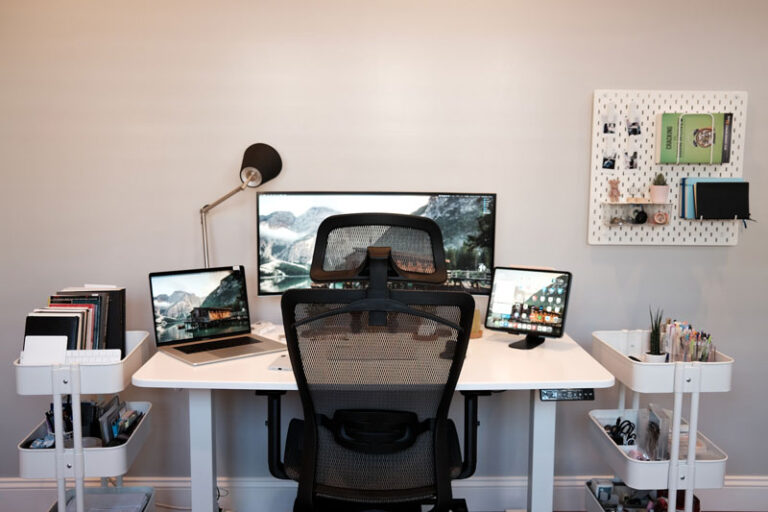Crafting an organized workspace enhances focus and boosts your motivation to learn. And, is there any better moment to rearrange your student desk than the start of a fresh school year? In order to create the perfect desk setup, you should consider following certain rules. That will help you design an ergonomic, functional, and aesthetic space, where studying is a pure pleasure.
Creative clutter or productive tidiness?
When considering a student desk for home, different approaches come into play. A cluttered desk often carries a connotation of creativity – despite its chaotic appearance, that kind of space can foster innovative thinking for some individuals.
However, even controlled chaos and clutter can impede effective learning and information retention during study sessions. If you want to boost your productivity and concentration, keeping your desk tidy and well-organized is crucial. It will help you avoid distractions and stay focused on the tasks at hand.
Straight-A desk organization
When setting up your ideal student desk for home, it’s important to tailor the workspace to your personal needs and study habits. Nevertheless, there are a few basic rules to follow:
1. Ergonomic desk
First and foremost, choose an ergonomic desk that suits your needs and guarantees comfort during long study sessions. Consider the desk’s height to prevent back or wrist issues. One of the best solutions is a wooden standing desk with adjustable height – it allows you to alternate between sitting and standing. If you want to take better care of your posture and sight, invest in a proper laptop stand so that you can place the screen at the right height.
Another important feature you should bear in mind is the desk’s tabletop size: too small and you’ll feel cramped; too large and non-essential items might gather and distract you.
2. Clutter-free desk surface
Place only essential items on your school desk, such as the most important notes, monitor, laptop, or tablet, keyboard, some pens, and most used stationery. This minimalistic approach leads to faster and higher-quality work.
3. Organized notes
It may seem that these days almost everything becomes digital. But physical notes and papers still have a place – and they can cause massive clutter. To prevent desk chaos, use ring binders or file folders to categorize and store study materials, class notes, and documents according to themes.
4. Designated spots for each item
Maintain order by assigning specific places for even the small items like sticky notes, sharpeners, erasers, scissors, staplers, chargers, etc. Utilizing desk organizers not only keeps your space neat but also enhances its visual appeal.
5. Concealed cables
Avoid the unsightly clutter of tangled charging cords on your desk. There are a lot of different cord organizers that you can use to tidy up cords and keep them out of view: sleeves, bands, clips, containers, or under-desk organizers.
Creating an ergonomic and convenient desk setup may take time, but the effort is well worth it. Thoughtful planning will enable you to customize the space to your personality and learning style. The result will be heightened productivity, motivation, comfort, and stress-free study experiences.

0 Comments